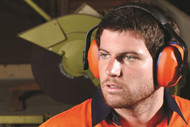How Loud is a Generator?
19th Jun 2019
The noise level of a generator is a major factor in determining the right model for its application. Many places have noise regulations that may impact generator usage, particularly at night. Loud generators are unsuitable for many applications, including camping, powering outdoor events, and caravanning.
All generators are labeled with a decibel rating. For every increase in 10 decibels, the noise level is 10 times more powerful. So a generator that runs at 70 decibels is ten times as loud as a generator that runs at 60 decibels.
The decibel which is normally abbreviated dBA is the unit used to measure the intensity of a sound. The human ear is incredibly sensitive, a person's ears can distinguish between wide ranging sounds such brushing their fingers on a notepad to the loudest explosion or Jet aircraft. To put these differences into perspective a jet aircraft is 1,000,000,000,000 times louder than the quietest audible sound.
Looking on the decibel decibel scale, the smallest audible sound which is near silence registers at 0 dB. An increase of 10 decibels equates to a 10 fold increase in noise to your ear.
Generators are measured and compared within the industry @ 7 metres. To comply with industry regulations all generators have to be marked in LWA this is a different measurement of sound which is taken from a different distance. for an example a quiet Honda EU22i is rated at its lowest at 52 dBA @ 7 metres on the LWA scale this would equate to approximately 88 decibels.
For the ultimate in quiet performance, Inverter series generators truly live up to their name. Thanks to their totally enclosed body and inverter technology, they operate as noise levels between 49 and 60 decibels - which is no louder than normal speech.
Open frame generators, which are commonly used on worksites and around the farm, are around 70 - 80 DbA
Diesel generators are normally found to be around 75 - 85 Dba, but a lower speed diesel or when enclosed in a canopy can make a difference and the noise level can be a lot lower.
Here are some common sounds and their decibel ratings:
| 190 dBA | Heavy weapons, 10m behind the weapon (maximum level) |
| 180 dBA | Toy pistol fired close to ear (maximum level) |
| 170 dBA | Slap on the ear, fire cracker explodes on shoulder, small arms at a distance of 50cm (maximum level) |
| 160 dBA | Hammer stroke on brass tubing or steel plate at 1m distance |
| 150 dBA | Hammer stroke in a smithy at 5m distance (maximum level) |
| 130 dBA | Loud hand clapping at 1m distance (maximum level) |
| 120 dBA | Whistle at 1m distance, test run of a jet at 15m distance |
| 115 dBA | Take-off sound of planes at 10m distance |
| 110 dBA | Siren at 10m distance, frequent sound level in discotheques and close to loudspeakers at rock concerts, violin close to the ear of an orchestra musicians (maximum level) |
| 105 dBA | Chain saw at 1 m distance, banging car door at 1m distance (maximum level), racing car at 40m distance, possible level withmusic head phones |
| 100 dBA | Frequent level with music via head phones, jack hammer at 10m distance |
| 95 dBA | Loud crying, hand circular saw at 1m distance |
| 90 dBA | Petrol Lawnmower |
| 85 dBA | 2-stroke chain-saw at 10m distance, loud WC flush at 1m distance |
| 80 dBA | Very loud traffic noise of passing lorries at 7.5m distance, high traffic on an expressway at 25m distance |
| 75 dBA | Passing car at 7.5m distance, un-silenced wood shredder at 10m distance |
| 70 dBA | Level close to a main road by day, quiet hair dryer at 1m distance to ear |
| 65 dBA | Normal Conversation |
| 55 dBA | Low volume of radio or TV at 1 m distance, noisy vacuum cleaner at 10 m distance |
| 50 dBA | Refrigerator at 1m distance, bird twitter outside at 15 m distance |
| 45 dBA | Noise of normal living; talking, or radio in the background |
| 35 dBA | Very quiet room fan at low speed at 1m distance |
| 25 dBA | Sound of breathing at 1m distance |
| 0 dBA | Auditory threshold |





